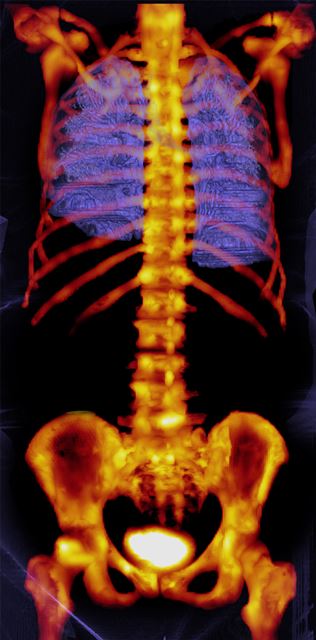Siemens launches SPECT-CT system for high resolution molecular imaging
19 August 2013
Siemens Healthcare's xSPECT system,
the Symbia Intevo, combines the high sensitivity of single-photon
emission computed tomography (SPECT) with the high specificity of CT
to generate high resolution and, for the first time, quantitative
images.
The new system reconstructs both the SPECT and CT
portions of an image into a much higher frame of reference than
other systems for precise, accurate alignment facilitating the
extraction and deep integration of medically relevant information.
This can differentiate between tissue boundaries in bone imaging, so bone clinicians can potentially provide additional support for detection and distinguishing between cancerous lesions and degenerative disorders. The Symbia Intevo’s precise alignment of SPECT and CT provides clinicians with essential volumetric information from the CT scan, enabling accurate and consistent quantitative assessment meaning the clinician can apply quantitative information to assess whether a patient's condition has regressed, stabilised or progressed.

The Symbia Intevo from Siemens Healthcare
integrates SPECT
and CT enabling a high level of image quality
and the ability
to differentiate between tissue boundaries in
bone imaging.
The Symbia Intevo uses more CT data than previous systems, but
can limit patient dose by offering combined applications to reduce
exposure (CARE). The system uses AUTOFORM collimator, capturing up
to 26 more counts, helping boost image acquisition time and patient
throughput.
“Siemens Healthcare anticipates the new Symbia Intevo technology will improve
the quality of care, while helping to reduce costs,” states Lawrence
Foulsham, Molecular Imaging Product Manager at Siemens Healthcare.
“Siemens recognises that these two elements must go hand-in-hand,
and with our new molecular imaging solutions, we can demonstrate our
commitment to true innovation leadership by overcoming the
limitations of conventional SPECT systems to help provide answers to
the toughest clinical questions in the safest and most efficient way
possible.”